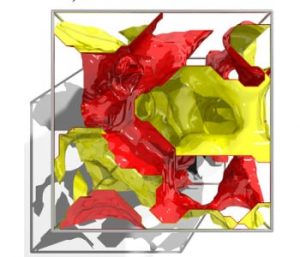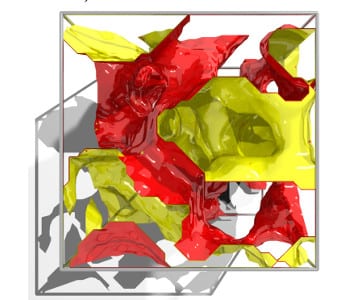 Organic solar cells offer the potential for inexpensive solar electric power generation, but efficiencies have lagged behind other systems. A key challenge is understanding charge transport in these complex systems in the face of complex interfaces, disorder, and defects.
Organic solar cells offer the potential for inexpensive solar electric power generation, but efficiencies have lagged behind other systems. A key challenge is understanding charge transport in these complex systems in the face of complex interfaces, disorder, and defects.
The Hutchison research group at University of Pittsburgh has focused on computational simulations of charge transport in disordered, complex organic semiconductors. In particular, since the dielectric constant in organics is much lower than silicon or conventional inorganic photovoltaic materials, the role of electrostatic interactions between charge carriers and between carriers and defects is critical towards understanding and improving electrical mobility. In this work, a new electrostatic model is used, treating electrons and holes not as point charges or an average electrostatic density, but as delocalized Gaussian spheres. Simulated device performance is much closer to experimental results and demonstrates that increasing charge carrier delocalization is a promising direction towards improving organic solar cells.

















